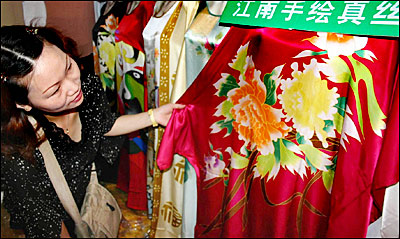Tremendous changes have taken place in the lifestyle of the
Chinese people in the past 50 years, particularly in the past two
decades as average income has increased steadily. People in China
today have money to buy or invest in houses and apartments, cars,
computers, stock and foreign travel. China's GDP per capita
exceeded US$1,000 in 2003, and the social consumption structure
made further improvement.
In the two decades after 1979, China's economy developed the
fastest and people's income increased the most. Rural residents'
average net income per capita increased from 134 yuan in 1978 to
2,936 yuan in 2004, an average increase of 7.1 percent per year;
the disposable income of urban residents rose from 343 yuan to
9,422 yuan, an average annual growth of 6.8 percent.
Higher incomes are reflected in bank savings; savings deposits
increased from 860 million yuan in 1952 to 21.06 billion yuan in
1978, but in the 20 years following reform and opening-up, personal
savings deposits have increased in geometric progression. Between
1979 and 1986, the balance of the savings deposits increased
10-fold, to reach 223.85 billion yuan, this figure rising to
2,151.88 billion yuan in 1994. In short, within 16 years, savings
deposits increased 100-fold. Eight years later in 2002, the figure
was 8,691.06 billion yuan, or 411.7 times that of 1978. It reached
10,361.77 billion yuan in 2003 and 11955.5 billion yuan in 2004.
Personal foreign exchange deposits, stocks, bonds, internal stocks,
and cash have all grown by a large margin.
 |
 |